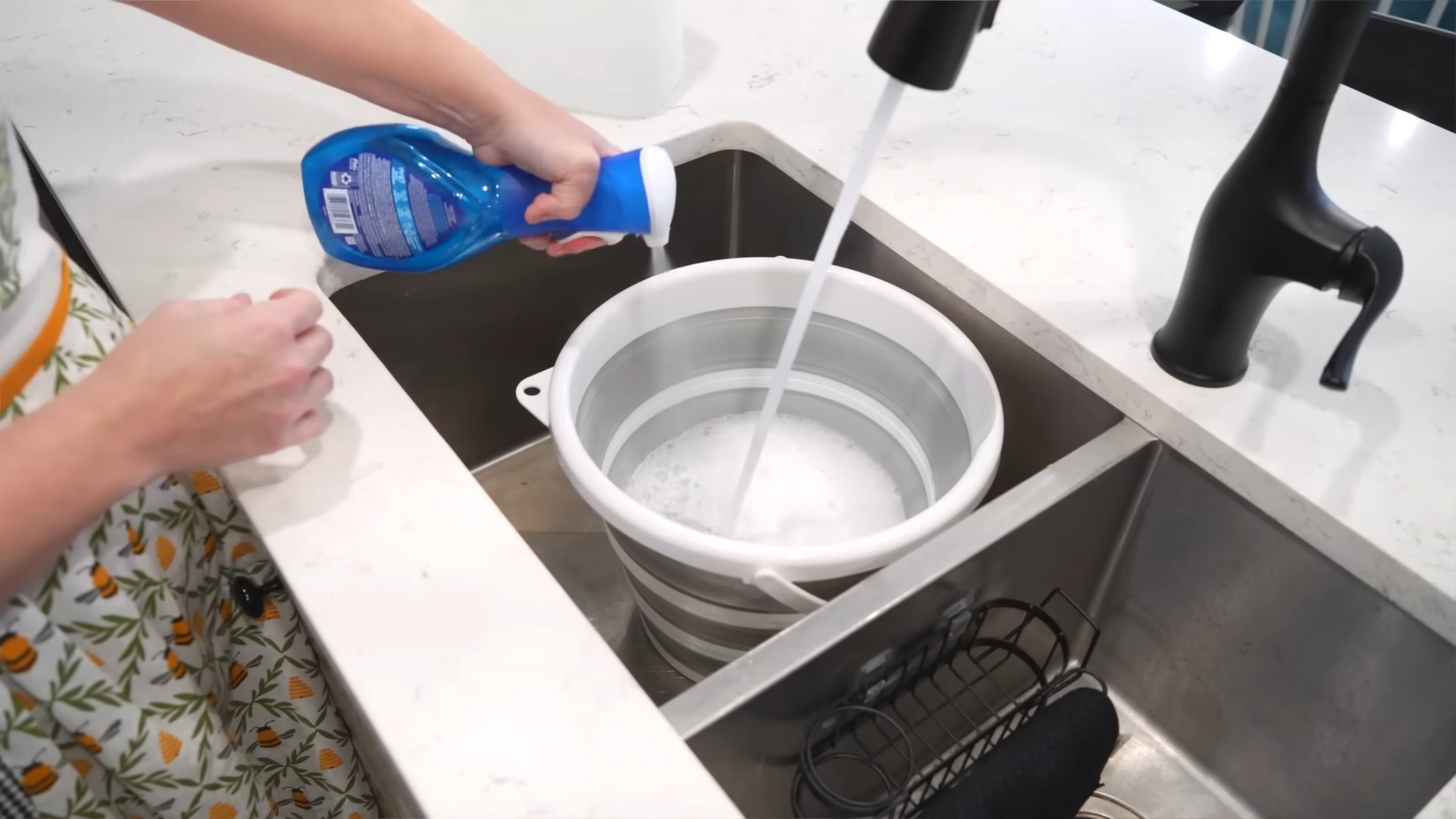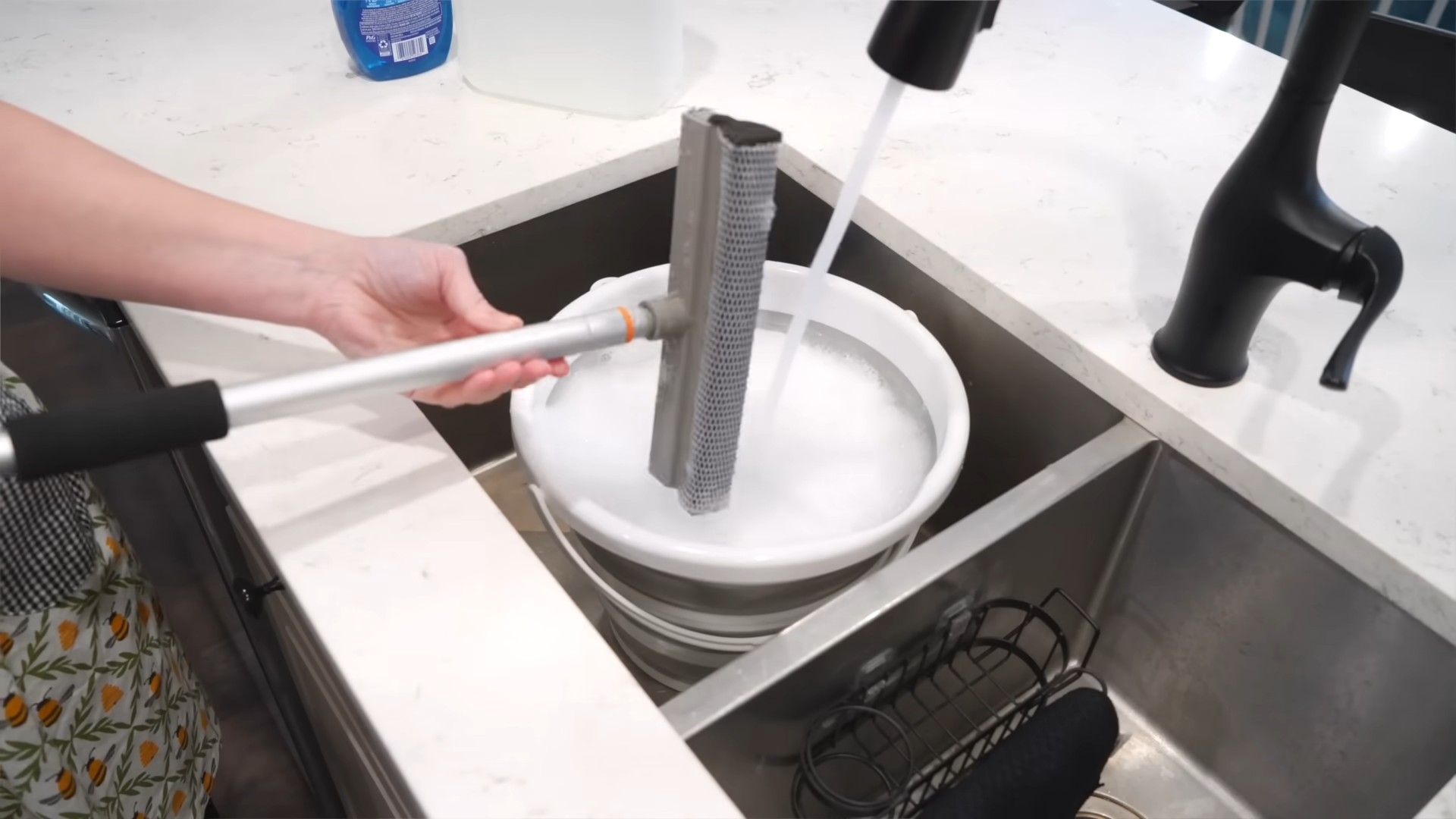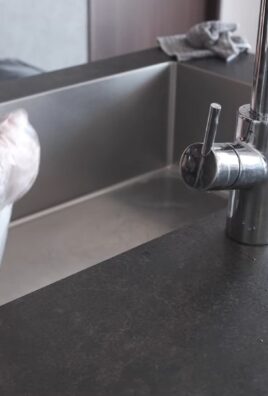DIY glass cleaner recipe: Ever find yourself staring at streaks on your windows, despite your best cleaning efforts? I know I have! It’s frustrating, isn’t it? You spend time and energy trying to get that crystal-clear shine, only to be left with a blurry mess. But don’t worry, I’m here to share a simple, effective, and budget-friendly solution that will transform your window cleaning game.
The quest for sparkling clean glass has been around for ages. Think about the grand palaces of history, where gleaming windows were a symbol of wealth and status. While we might not be cleaning palace windows, we all deserve a streak-free view! And let’s be honest, commercial glass cleaners can be expensive and often contain harsh chemicals that aren’t great for our health or the environment. That’s where this DIY glass cleaner recipe comes in.
This isn’t just about saving money (though that’s a definite perk!). It’s about taking control of what you’re bringing into your home and creating a healthier living space. Plus, it’s incredibly satisfying to whip up your own cleaning solutions and see them work wonders. So, ditch the store-bought stuff and get ready to discover the magic of a homemade glass cleaner that will leave your windows sparkling and your conscience clear!

DIY Streak-Free Glass Cleaner: Save Money and the Environment!
Hey everyone! I’m so excited to share my go-to recipe for a sparkling clean, streak-free glass cleaner. I’ve been using this for years, and it’s seriously the best. Not only does it work better than most store-bought cleaners, but it’s also much cheaper and better for the environment. Plus, you probably already have all the ingredients you need!
What You’ll Need: The Essential Ingredients
Before we dive in, let’s gather everything we need. This is a super simple recipe, so the list is short and sweet:
* Distilled Water: This is key for avoiding streaks! Tap water often contains minerals that can leave residue.
* White Vinegar: The star of the show! Vinegar is a natural cleaner and disinfectant.
* Rubbing Alcohol (Isopropyl Alcohol): This helps the cleaner evaporate quickly, preventing streaks.
* Essential Oil (Optional): For a pleasant scent! I love using lemon, lavender, or tea tree oil.
* Spray Bottle: A clean, empty spray bottle is essential for application.
* Microfiber Cloths: These are the best for streak-free cleaning. Avoid paper towels, as they can leave lint.
The Magic Ratio: Getting the Proportions Right
The secret to a great glass cleaner is getting the proportions just right. Here’s the ratio I’ve found works best:
* 2 cups distilled water
* 1/2 cup white vinegar
* 1/4 cup rubbing alcohol
* 5-10 drops of essential oil (optional)
Step-by-Step Instructions: Making Your Glass Cleaner
Okay, let’s get down to business! Here’s how to make your own amazing glass cleaner:
1. Gather Your Supplies: Make sure you have everything listed above ready to go. This will make the process much smoother.
2. Prepare the Spray Bottle: Rinse your spray bottle thoroughly with hot water to remove any residue from previous cleaners. Let it dry completely. This is important to prevent contamination and ensure your new cleaner works its best.
3. Add Distilled Water: Pour 2 cups of distilled water into the spray bottle. Using a measuring cup will help you get the proportions accurate.
4. Add White Vinegar: Carefully pour 1/2 cup of white vinegar into the spray bottle. The vinegar smell might be a bit strong at first, but don’t worry, it will dissipate quickly.
5. Add Rubbing Alcohol: Now, add 1/4 cup of rubbing alcohol to the mixture. This will help the cleaner evaporate quickly and prevent streaks.
6. Add Essential Oil (Optional): If you’re using essential oil, add 5-10 drops to the spray bottle. I personally love lemon oil for its fresh, clean scent, but feel free to experiment with your favorites! Lavender is also a great choice for a calming aroma. Tea tree oil has antibacterial properties, which is a bonus.
7. Secure the Spray Bottle: Screw the spray nozzle tightly onto the bottle. Make sure it’s secure to prevent any leaks.
8. Shake Well: Give the spray bottle a good shake to thoroughly mix all the ingredients. This is important to ensure the cleaner is evenly distributed.
9. Label Your Bottle: This is a crucial step! Label your spray bottle clearly with “Glass Cleaner” and the date you made it. This will prevent any confusion later on.
Cleaning Like a Pro: Application Tips and Tricks
Now that you have your homemade glass cleaner, let’s talk about how to use it effectively. Here are some tips and tricks I’ve learned over the years:
1. Spray Sparingly: A little goes a long way! Over-spraying can actually lead to streaks. Apply a light mist to the surface you’re cleaning.
2. Use a Microfiber Cloth: As I mentioned earlier, microfiber cloths are essential for streak-free cleaning. They’re super absorbent and won’t leave lint behind.
3. Fold Your Cloth: Fold your microfiber cloth into quarters. This gives you multiple clean surfaces to work with.
4. Wipe in One Direction: Wipe the surface in one direction, overlapping each stroke slightly. This helps to avoid streaks.
5. Flip and Repeat: Once one side of your cloth is dirty, flip it to a clean side and continue wiping.
6. Buff to a Shine: After wiping, use a clean, dry microfiber cloth to buff the surface to a sparkling shine. This will remove any remaining residue and leave your glass looking crystal clear.
7. Tackle Tough Spots: For stubborn spots or grime, spray the cleaner directly onto the area and let it sit for a few seconds before wiping.
8. Clean Windows on a Cloudy Day: Believe it or not, cleaning windows on a sunny day can actually cause streaks! The sun can dry the cleaner too quickly, leaving behind residue. Cloudy days are ideal for window cleaning.
9. Don’t Forget the Edges: Pay attention to the edges and corners of your windows and mirrors. These areas often accumulate dirt and grime.
10. Wash Your Microfiber Cloths Regularly: To keep your microfiber cloths working their best, wash them regularly in warm water with a mild detergent. Avoid using fabric softener, as it can reduce their absorbency.
Where to Use Your Homemade Glass Cleaner: Versatility is Key!
The beauty of this homemade glass cleaner is that it’s incredibly versatile. You can use it on a variety of surfaces, including:
* Windows: Of course! This is what it’s designed for.
* Mirrors: Get rid of those annoying smudges and fingerprints.
* Glass Shower Doors: Keep your shower doors sparkling clean and free of soap scum.
* Glass Tabletops: Perfect for removing spills and fingerprints.
* Car Windows: Inside and out! Just be careful not to get it on the car’s paint.
* Stainless Steel Appliances: This cleaner can also be used to clean stainless steel appliances, leaving them shiny and streak-free. Just be sure to test it in an inconspicuous area first.
Troubleshooting: Common Issues and Solutions
Even with the best recipe, you might encounter a few issues. Here are some common problems and how to fix them:
* Streaks: If you’re getting streaks, make sure you’re using distilled water and microfiber cloths. Also, try using less cleaner and buffing the surface with a dry cloth.
* Smell: If the vinegar smell is too strong, add a few more drops of essential oil. The smell will dissipate quickly, but the essential oil will help mask it.
* Residue: If you’re noticing a residue, it could be due to hard water or too much cleaner. Try diluting the cleaner with more distilled water.
* Cloudiness: If your cleaner is cloudy, it could be due to the essential oil not mixing properly. Try shaking the bottle more vigorously.
Safety First: Important Precautions
While this glass cleaner is made with natural ingredients, it’s still important to take some precautions:
* Keep Out of Reach of Children: Store the cleaner in a safe place where children cannot access it.
* Avoid Contact with Eyes: If the cleaner gets in your eyes, rinse them immediately with plenty of water.
* Test on an Inconspicuous Area: Before using the cleaner on a new surface, test it in an inconspicuous area to make sure it doesn’t cause any damage or discoloration.
* Don’t Mix with Other Cleaners: Never mix this cleaner with other cleaning products, as this could create harmful fumes.
Why This Recipe Rocks: The Benefits of DIY
I’m a huge fan of DIY cleaning products, and this glass cleaner is one of my favorites. Here’s why:
* Cost-Effective: It’s much cheaper than buying store-bought cleaners.
* Environmentally Friendly: It’s made with natural ingredients and reduces plastic waste.
* Customizable: You can adjust the scent and strength to your liking.
* Effective: It works just as well, if not better, than store-bought cleaners.
* Peace of Mind: You know exactly what’s in it, so you can avoid harsh chemicals.
So there you have it! My ultimate guide to making your own streak-free glass cleaner. I hope you give it a try and see for yourself how amazing it is. Happy cleaning!

Conclusion
So, there you have it! Ditching the store-bought chemical cocktails and embracing this simple, effective, and eco-friendly DIY glass cleaner recipe is more than just a cleaning hack; it’s a conscious choice for a healthier home and a happier planet. We’ve walked you through the easy steps, highlighted the cost-saving benefits, and emphasized the peace of mind that comes with knowing exactly what you’re spraying around your living spaces.
But why is this DIY trick a must-try? Beyond the obvious advantages of being budget-friendly and environmentally responsible, this homemade glass cleaner delivers sparkling results that rival, and often surpass, those of commercial products. The streak-free shine is truly remarkable, leaving your windows, mirrors, and glass surfaces looking crystal clear and inviting. Plus, you can customize the scent to your liking, creating a cleaning experience that’s both effective and enjoyable.
Looking for variations? Absolutely! For extra cleaning power on stubborn grime, consider adding a teaspoon of borax to the mix. Borax acts as a natural booster, helping to cut through grease and dirt with ease. If you prefer a stronger scent, experiment with different essential oil combinations. Lavender and lemon create a calming and refreshing aroma, while tea tree oil adds an antibacterial boost. Remember to start with a few drops and adjust to your preference. Another great addition is a tablespoon of rubbing alcohol for faster drying and even less streaking.
Don’t be afraid to experiment with different ratios of vinegar and water to find the perfect balance for your specific needs. Hard water can sometimes leave spots, so you might need to increase the vinegar concentration slightly. The beauty of this DIY approach is that you have complete control over the ingredients and their proportions.
We wholeheartedly encourage you to give this DIY glass cleaner recipe a try. It’s a small change that can make a big difference in your home and your well-being. Once you experience the sparkling results and the satisfaction of creating your own cleaning solution, you’ll never go back to store-bought products again.
But the real magic happens when you share your experience with others. We’d love to hear about your results, your favorite variations, and any tips or tricks you discover along the way. Share your photos and stories on social media using #DIYGlassCleaner and let’s inspire others to embrace a more sustainable and healthier cleaning routine. Let’s create a community of sparkling clean homes, one DIY glass cleaner recipe at a time! Your feedback is invaluable and helps us refine and improve our recipes for everyone. So, grab your ingredients, mix up a batch, and prepare to be amazed by the power of homemade cleaning!
Frequently Asked Questions (FAQ)
1. What kind of vinegar should I use for this DIY glass cleaner recipe?
White distilled vinegar is the best choice for this recipe. It’s inexpensive, readily available, and has a high acidity level, making it effective at cutting through grime and dirt. Avoid using other types of vinegar, such as apple cider vinegar or balsamic vinegar, as they may contain sugars or other compounds that can leave streaks on your glass surfaces. The clear, clean nature of white distilled vinegar ensures a streak-free finish.
2. Can I use tap water, or do I need to use distilled water?
While tap water is generally fine, distilled water is highly recommended, especially if you have hard water. Hard water contains minerals that can leave spots and streaks on your glass. Distilled water is purified and free of these minerals, ensuring a cleaner, streak-free shine. If you only have tap water, you can try boiling it and letting it cool before using it in the recipe, which can help reduce the mineral content. However, distilled water is the ideal choice for optimal results.
3. What kind of spray bottle should I use?
Any clean, empty spray bottle will work for this DIY glass cleaner recipe. However, it’s best to use a bottle that has a fine mist setting for even distribution of the cleaner. Avoid using bottles that have previously contained harsh chemicals, as residue may contaminate your homemade cleaner. Rinse the bottle thoroughly with soap and water before using it. A dark-colored bottle can also help protect the essential oils from light degradation if you choose to add them.
4. How often should I clean my windows and mirrors with this DIY glass cleaner?
The frequency of cleaning depends on your environment and personal preferences. In general, cleaning your windows and mirrors every two to four weeks is a good starting point. If you live in a dusty area or have pets, you may need to clean them more frequently. Regular cleaning will prevent dirt and grime from building up, making it easier to maintain a sparkling clean home.
5. Can I use this DIY glass cleaner on other surfaces besides windows and mirrors?
Yes, this DIY glass cleaner is safe to use on most glass and hard, non-porous surfaces, including glass stovetops, shower doors, and chrome fixtures. However, it’s always a good idea to test it on a small, inconspicuous area first to ensure it doesn’t damage the surface. Avoid using it on porous surfaces like wood or natural stone, as the vinegar can damage them.
6. How long will this DIY glass cleaner last?
This DIY glass cleaner has a long shelf life, typically several months to a year, as long as it’s stored in a cool, dark place. The vinegar acts as a natural preservative, preventing bacterial growth. However, it’s always a good idea to label the bottle with the date you made it so you can keep track of its age. If you notice any changes in color, odor, or consistency, it’s best to discard it and make a fresh batch.
7. What essential oils are best to use in this DIY glass cleaner?
Many essential oils can be used in this DIY glass cleaner, depending on your personal preferences and desired benefits. Some popular choices include:
* **Lemon:** Provides a fresh, clean scent and has antibacterial properties.
* **Lavender:** Offers a calming and relaxing aroma.
* **Tea Tree:** Has antibacterial and antifungal properties.
* **Peppermint:** Creates a refreshing and invigorating scent.
* **Eucalyptus:** Provides a clean, medicinal aroma and has antiseptic properties.
Start with a few drops of essential oil and adjust to your preference. Be sure to use pure, high-quality essential oils for the best results.
8. Is this DIY glass cleaner safe for pets and children?
Yes, this DIY glass cleaner is generally safe for pets and children, as it’s made with natural ingredients. However, it’s still important to keep it out of their reach and avoid spraying it directly in their eyes or mouth. If your pet or child ingests the cleaner, contact a veterinarian or poison control center immediately. While the ingredients are natural, ingestion can still cause irritation or discomfort.
9. My glass cleaner is leaving streaks. What am I doing wrong?
Streaking can occur for several reasons. Here are some troubleshooting tips:
* **Hard Water:** Use distilled water instead of tap water.
* **Too Much Cleaner:** Use a fine mist setting on your spray bottle and avoid oversaturating the surface.
* **Dirty Cloth:** Use a clean, lint-free microfiber cloth.
* **Residue:** Rinse the surface with clean water after cleaning.
* **Vinegar Concentration:** Adjust the ratio of vinegar to water. If you have hard water, you may need to increase the vinegar concentration slightly.
* **Cloth Quality:** Ensure your microfiber cloth is specifically designed for cleaning glass. Some cloths can leave behind residue.
10. Can I use this DIY glass cleaner on tinted windows?
It’s generally safe to use this DIY glass cleaner on tinted windows, but it’s always a good idea to test it on a small, inconspicuous area first to ensure it doesn’t damage the tint. Avoid using abrasive cleaners or harsh chemicals on tinted windows, as they can scratch or fade the tint. If you’re unsure, consult with a professional window tinting company.




Leave a Comment